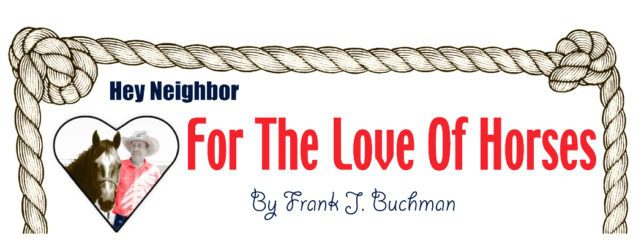A spine tinging feeling spread through hearts as the mounted cavalry troops galloped into the arena nation’s colors flying.
It was Saturday morning’s opening ceremonies for EquiFest of Kansas at Salina creating feeling of history a century-and-a-half gone by.
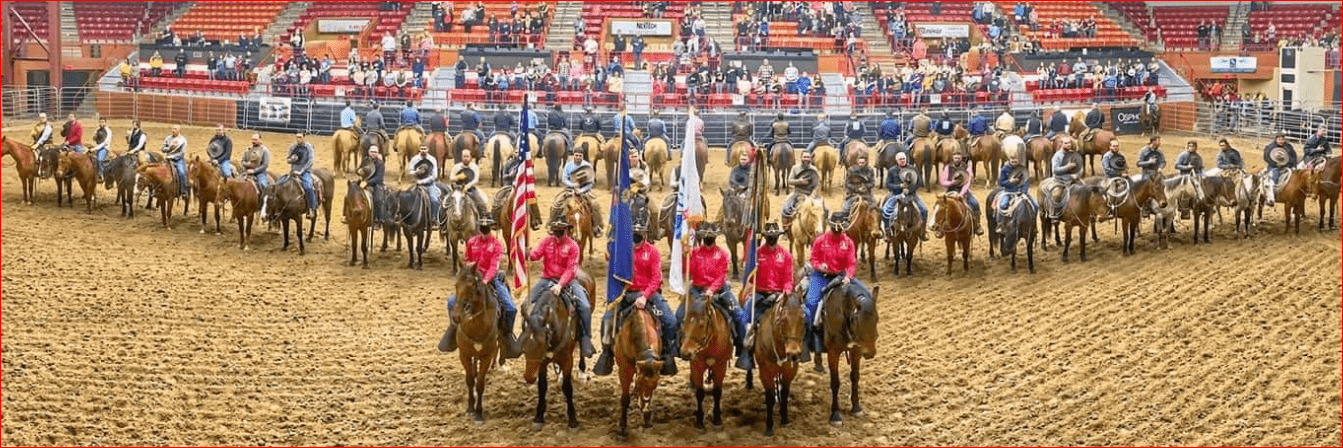
The Commanding General’s Mounted Color Guard provides a link recognizing importance of the cavalry soldier during the Civil War era.
“Established in 1992, the Color Guard is composed of active-duty Fort Riley soldiers,” said Commander Captain Michael L. Haynes.
Troopers and their horses were outfitted in period-appropriate uniforms, accoutrements and equipment.
With Haynes on his buckskin gelding named Buck, they demonstrated the skill and precision required of cavalry soldiers.
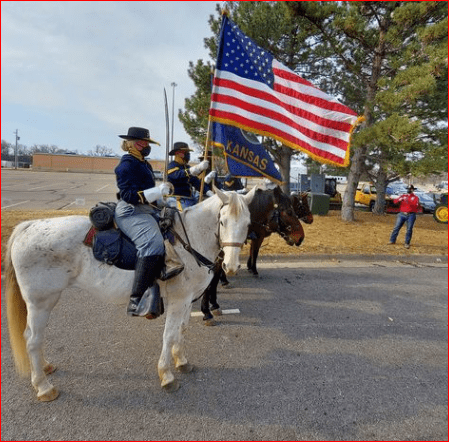
“We have 30 Color Guard members and 22 horses at this time,” Captain Haynes explained. “It is a fulltime unit with the soldiers each serving two years.”
Soldiers are detailed from the ranks of units assigned to Fort Riley and receive instruction from manuals used by Civil War cavalrymen.
From privates to officers, these men and women recreate the colorful spectacle of the American Horse Soldier.
A background with horse experience is not a requirement to be a member of the Color Guard. “We have soldiers who’ve never been around horses as well as those who have extensive horse knowledge,” Haynes related.
There are regular training sessions for the horsemen and their horses. “We have a senior rider, the most skilled rider in the unit, who oversees all horse-rider training,” Captain Haynes said.
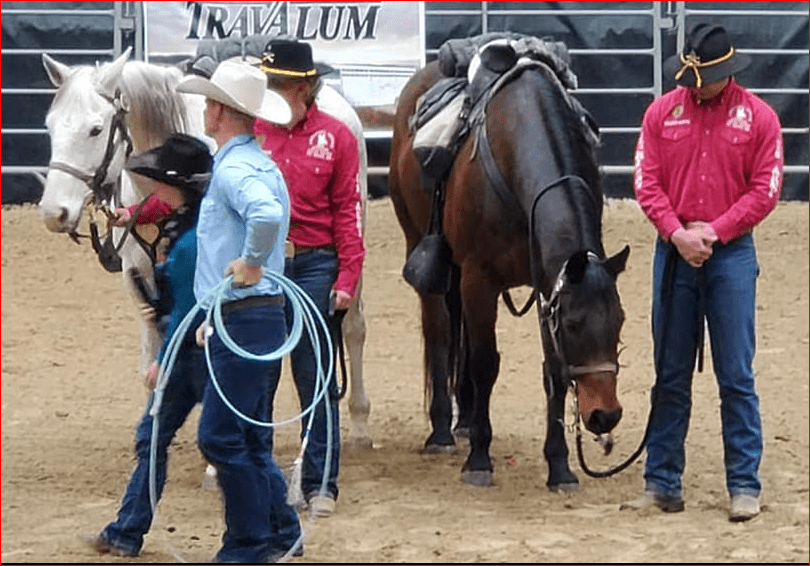
When acquiring horses, the Mounted Color Guard typically looks for five-to-10-year-old bay geldings with little or no white markings. “We want the horses to stand 15 to 15.2-hands high and weigh 1,100 to 1,200-pounds,” Haynes said.
Horses with solid feet are preferred. “They must be sound and possess the ability to perform at the level that our training and performances demand,” Haynes explained.
“Original 7th Cavalry horses were bay, but units are authorized by original doctrine to have two off-color horses,” Haynes said. “As the commander I ride my buckskin and a white horse is ridden by the guidon bearer.
“These different colored horses allow cavalrymen to identify those in command of troops,” Haynes continued.
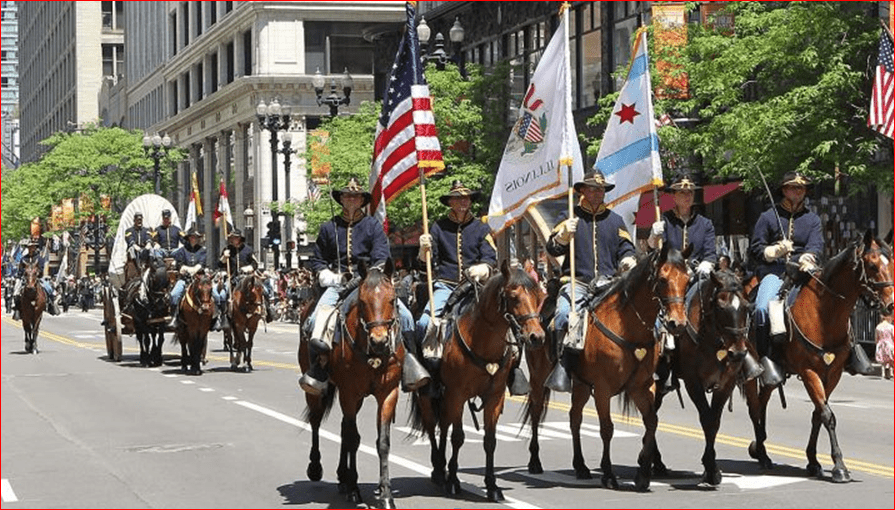
“We strive to use animals that will provide for authentic recreations during battle re-enactments and other historic activities,” he added.
“Our horses have come from a wide range of backgrounds and are all owned by Fort Riley,” the commander said.
Horses are housed in the cavalry stable with the original cobblestone floor on Fort Riley’s main post.
“Constructed of native limestone, this 143-foot-by-63-foot building was built in 1889 at a cost of $8,861,” Haynes said. “It originally housed 76 horses utilized by the Cavalry Riding School.”
While housing Color Guard horses, the stable is staffed by a commander, first sergeant and special duty soldiers. Visitors are welcome during the week by appointment.
Trimmed in yellow, branch colored wool and cotton uniforms worn by the Color Guard provide degrees of warmth and coolness. “While in camp or garrison, the sack coat and muslin shirts are common attire,” Haynes noted.
Kersey blue trousers are reinforced in the seat to prolong wear. “The wider the yellow stripe, the higher the enlisted rank,” Haynes pointed out. “Officer’s trousers have only eighth-inch welt of yellow cord down the outside seam.” Black knee-high riding boots are worn.
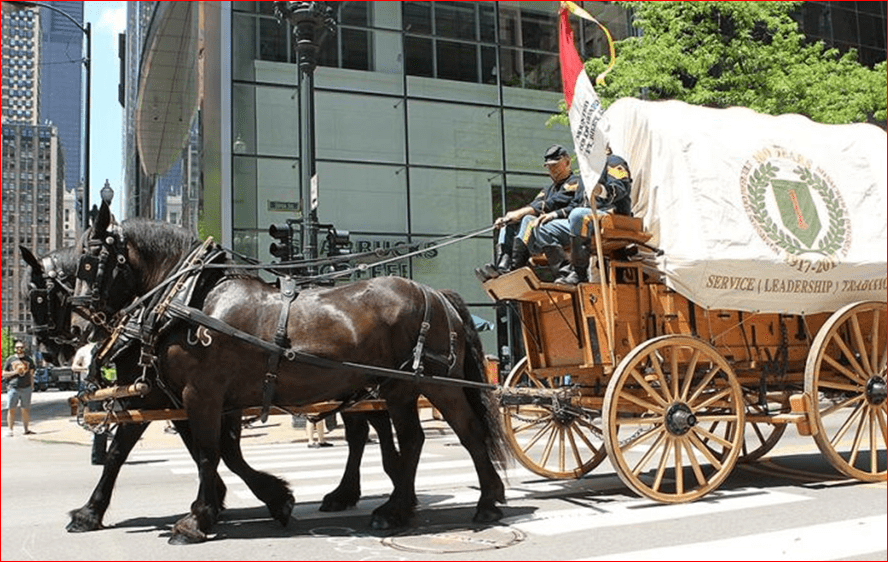
Headgear includes a forage cap, which was copied from a style popular in the French Army. “Enlisted men occasionally wear slouch hats or campaign hats, without yellow hat cords,” Haynes related.
Standard saddle used by the Color Guard is the 1859-pattern McClellan designed for the comfort of the horse. “Captain George B. McClellan developed the saddle’s design after his travels in Mexico and Europe in the 1850s,” Haynes explained. “Distinctive feature is the rawhide seat adapted for economy.”
Including a curb bit bridle, this saddle, with certain modifications, was used by the cavalry until World War II. Cavalrymen also carry two canteens; feed bag, lariat and saddle bags.
The Civil War cavalryman used a variety of weapons as does the Color Guard. “Our handguns include 1858 .44-caliber Remington and 1873 .45-caliber Colt revolvers,” Haynes related. “We also have 1873 .45-caliber Remington lever-action rifles and 12-guage double-barrel shotguns.”
Original cavalrymen might have also carried a standard pattern 1861 light cavalry saber. “The saber gave the horse soldier another weapon in his arsenal if the situation required its use,” Haynes said.
The 1871 Army Escort Wagon pulled by two molly mules was an EquiFest attraction as well. “We acquired two Percheron draft horse cross mules from Tennessee in 2005,” Haynes said “They have earned several awards in draft working events at the Kansas State Fair in Hutchinson.”
The U.S. Cavalry Museum donated the escort wagon to the Color Guard in 2001. “Records show the wagon came to Fort Riley from Fort Knox,” Haynes commented. “Hardware of the wagon is 98 percent original, but, when the unit received the wagon, much of the wood was decayed. Soldiers and a wagon company restored the wagon to its current condition.”
The box is constructed of red oak while the undercarriage and wheels are made out of white oak.
“While escort wagons were not common, they were sought after to transport the cavalry’s beans and bullets,” Haynes said.
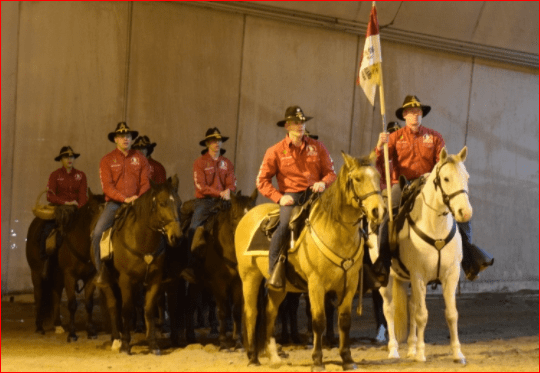
Renowned horse clinician Chris Cox visited with Color Guard members as a highlight for the cavalrymen during EquiFest.
The Commanding General’s Mounted Color Guard has performed throughout the United States including President Trump’s Inaugural Parade.
“We are available to do parades and other community events. An encampment is available as are cavalry tactics demonstrations,” Haynes said. “We are flexible and can adjust performances and parades for your community.”
Requests for the Color Guard to participate in community events are available on Fort Riley’s community relations page or by calling 785-240-0306.
